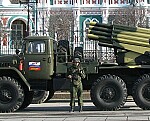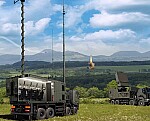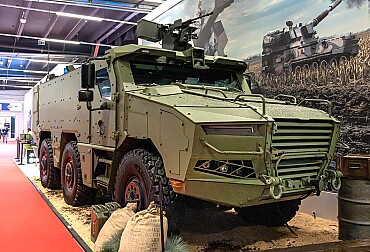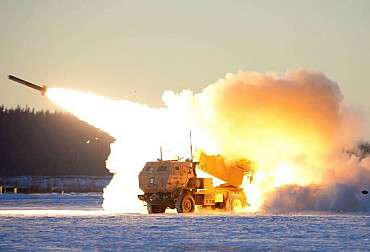The Czech Army is preparing to incorporate the Spyder system into its arsenal
Following the introduction of EL/M-2084 MMR (MADR) mobile 3D radars into the Czech Army's arsenal, military trials of the eagerly awaited Israeli SPYDER air defence systems will also take place in the second half of this year. Four batteries of these systems were purchased in 2021, shortly before the elections, through an intergovernmental agreement with Israel for CZK 13.7 billion. As with the MADR radars, the demanding task of preparing the equipment for military testing and active service in the Czech Army is being handled by the Pardubice-based company Retia. Full deployment is planned for 2027, when SPYDER will replace the outdated Soviet 2K12 KUB system.

The SPYDER system, developed by Israeli company Rafael Advanced Defense Systems in cooperation with Israel Aerospace Industries, is a mobile short- to medium-range anti-aircraft missile system that uses Python-5 and Derby missiles. It is capable of engaging aircraft, helicopters, drones and precision-guided munitions. In addition to the Czech Republic, the system is also used by the armed forces of India (a contract for 18 SPYDER-SR sets was signed in 2008), the Philippines (which has purchased three SPYDER-MR batteries, which are already integrated into its arsenal), as well as Ethiopia, Peru, Singapore and Vietnam. The United Arab Emirates is also in talks to purchase the system. The Czech Republic will be the first NATO country to introduce the system into its arsenal. Since the beginning of the project, there has been talk of an obvious need to increase the number of batteries from four. In March, Defence Minister Jana Černochová announced negotiations with Israel on the possibility of ordering additional sets beyond the original order from 2021.
The Czech Republic has opted for the SPYDER-MR (Medium Range) variant with a range of 35-50 km and a strike altitude of 20 km. In addition to this variant, there are also the SR (Short Range) with a range of 15-20 km and the ER (Extended Range) with a range of up to 80 km depending on the configuration. The All-in-One version combines all elements into one vehicle for maximum flexibility and faster deployment, with the standard configuration also providing the ability to deploy very quickly within five minutes of arriving at the position. The system uses Python-5 (infrared guidance, high manoeuvrability) and Derby (active radar guidance) missiles with fire-and-forget technology, which are characterised by their ability to detect low-radar-signature targets, including drones, guided missiles, aircraft and helicopters.
Versatility in the form of the ability to detect a wide range of threats, including aircraft, helicopters, unmanned aerial vehicles, guided missiles and short-range ballistic missiles, is one of the strongest features of the system, making it ideal for the defence of strategic facilities, military bases and mobile units. The ability to fire several missiles simultaneously against different targets is a matter of course, while the combination of infrared and radar guidance increases the probability of a hit even in the event of jamming attempts (e.g. electronic countermeasures). The radar and missiles are designed to withstand electronic jamming and decoys, which increases their effectiveness in modern combat. The system is suitable for various terrains and environments thanks to its robust design and modularity. Another significant advantage is the relatively low operating costs of the system – compared to other air defence systems (e.g. Patriot), SPYDER is more affordable and has lower maintenance and operating costs.
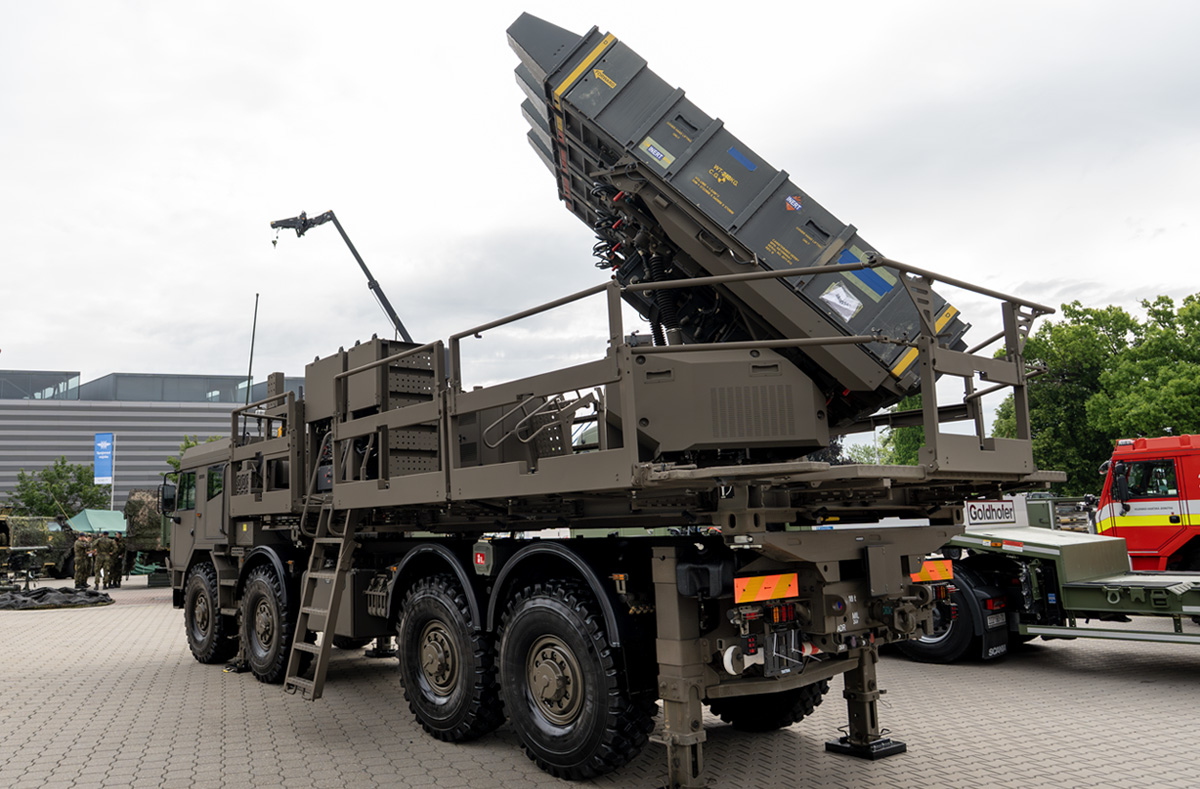
The SPYDER system battery will consist of four launchers, a charging/supply vehicle, a central command and control centre and an EL/M-2084 MMR radar within the 251st Anti-Aircraft Missile Battalion of the 25th Regiment of the Czech Armed Forces. Within the Czech Army, the systems will use eight-wheel Tatra 815-7 chassis. In addition to Tatra, the Military Technical Institute and the aforementioned Retia company are also participating in the contract, accounting for 30% of its value. The system is fully compatible with Alliance standards, which facilitates cooperation with partners.
As part of the SHORAD project, Retia carried out the ‘Czechisation’ of the SPYDER system with dozens of modifications according to the army's requirements and is providing the SHORAD battery command system and connection to the national air defence system. According to Jan Mikulecký, CEO of Retia a.s., previous work on the integration of MADR radars facilitated the work on the SPYDER project. The project has deepened cooperation with Rafael, and partnerships for the development and production of other technologies are already planned. The SPYDER project is thus an example of how military acquisitions can and should have a positive impact not only on the desired modernisation of the armed forces, but also on opportunities for the domestic defence industry.
The economic efficiency of the SPYDER system is also an attractive opportunity in the long term. The Czech Republic is the first NATO country to introduce the system into service. The war in Ukraine clearly demonstrates the need for effective air defence at all levels, including SHORAD, and it can be assumed that SPYDER will find its way into the armament of many allied armies. The experience of the Czech Armed Forces and the defence industry companies involved in the project will be important in this regard. In addition to production and integration into the arsenal, including operator training and technical support, Retia will also be responsible for 40% of servicing, which will bring invaluable experience.
We asked Col. Magdalena Dvořáková, spokesperson for the General Staff of the Czech Army, the following questions about the SPYDER system:
Strengthening air defence must be one of the priorities of the ongoing modernisation of the Czech Armed Forces. In the layer covered by SPYDER, what would be the optimal number of batteries in terms of the Czech Republic's needs, and what is the minimum number of batteries?
Strengthening ground-based air defence is indeed one of the priorities of the Czech Armed Forces. It is not just a matter of increasing the number of anti-aircraft systems, but also of acquiring the capability to counter a wide range of air attack assets. The SPYDER anti-aircraft missile system is capable of operating in the short, medium and long range categories, depending on the type of missiles used, with priority given to medium range tasks. It will be deployed not only for the protection of the Czech Republic's airspace, but also as part of NATO's Integrated Air and Missile Defence System. The minimum number of anti-aircraft missile batteries armed with the SPYDER system with priority for medium-range operations is exactly the number that the Czech Armed Forces is purchasing, i.e. four. However, this is only the first step towards a qualitative and quantitative increase in ground-based air defence capabilities. As for the optimal number, it would be premature and misleading to give a specific figure at this stage. This is currently the subject of in-depth analysis. From the point of view of the Czech Republic's security, it is also inappropriate to disclose such information in the public domain.
Should the Czech Republic seek to expand the capabilities of the SPYDER system, particularly in the area of missile defence, following its introduction?
The SPYDER system is not designed to eliminate ballistic missiles. It is important to bear in mind that the Czech Republic is part of the NATO Integrated Air and Missile Defence (IAMD) concept. However, the Czech Armed Forces are interested in acquiring missile defence capabilities in the lower layer. The Czech Armed Forces are currently examining the options and products of suppliers of appropriate systems. However, the deadline for the acquisition of a lower layer missile defence system is beyond 2030.
Personnel issues in the Czech Army are being discussed intensively. What is the current staffing level in the 25th Regiment? Does the transition to the SPYDER system place higher demands on your unit in this regard?
The staffing level of the 25th Anti-Aircraft Missile Regiment is not ideal, which significantly increases the demands on existing personnel when performing the tasks assigned to the regiment. Recruitment is successful, but due to the turnover of existing personnel, the increase in the total number of personnel in the regiment is minimal. It can be assumed that the increase in salary rates on 1 July 2025 and 1 January 2026 will reduce staff turnover and the number of personnel in the regiment will grow. Since 2023, the organisational structure of the regiment has been gradually optimised for the needs of the SPYDER system. Currently, three of the four batteries already have a new organisational structure. These batteries are gradually being filled and, given the above assumption, the number of operators for the systems to be delivered gradually will be sufficient.
Would the SPYDER All-in-One concept be of interest to the Czech Army, and will its acquisition be considered?
Yes, intensive technical consultations are currently underway with the supplier to determine the technical and operational capabilities of the system. No decision on procurement has been made yet, but the Czech Army is definitely interested in a system that will cover the short-range layer.



